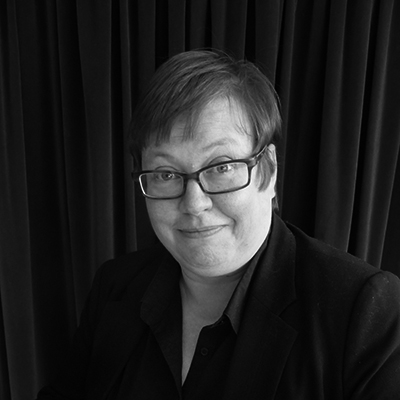The brand’s global strategy and investment media leader addresses KPIs influencing media selection, how effective follow-up measurement strategies will ensure success, and the importance of audio in retail

Can you tell us about your role at IKEA? And how marketing has changed over the years?
I’ve been part of the IKEA global marketing team since 2015. Before that, I worked in various advertising and marketing roles in the UK covering Ireland as well. My Strategy & Media Investment remit covers 30 diverse markets across EMEA, North America, and APAC. It’s a broad spread in terms of market size, culture, population size, media landscapes, and, as such, is a fascinating area to work in.
When I joined the global marketing team, we had more people handling social media than media managers. In most markets, media management was handled alongside other marketing or advertising responsibilities. As the media landscape evolved in complexity, there was a clear need to have resources in every market dedicated to effective media management. Today, we have a media team in every market that’s a part of the marketing team in that market. We have a clear media governance, a clear media and measurement framework and an effective media operating model. We have done a variety of media-specific and media-focused initiatives to build up the muscle of that community and strengthen the strategic media focus within the business.
You mentioned some shifts and changes in the media landscape in the last five years. Of the changes, which would you say have had the biggest impact on IKEA and on retail in general?
In terms of the media landscape evolution, there has been a sheer explosion of channels, touchpoints, and access to data for enhanced media planning and measurement. There was a time when media planning was just as easily done as buying key TV spots for retail and press ads. If you took the typical retail media strategy route, you would go out on the Thursday to build up for weekend traffic. With the death of print media, and the explosion of digital and social media possibilities for marketers, it is just becoming far more of a strategic and complex task to make sure that you do effective consumer touchpoint planning across the media ecosystem. After all it is critical that you are present where your audiences are.
It’s an exciting time to be working in media, because of all the changes taking place. At the same time, it can come across as a little too complicated to some people. The immediate task is to simplify so that stakeholders see a clear, strategic media plan that works to drive both business financial growth and strong brand health.
Several marketers face challenges in terms of reaching balance, understanding when to prioritize, and in concepts such as reach versus relevance. Is there anything that really tips the scale?
I developed and introduced a consistent econometrics framework for IKEA, and we’ve rolled it out to 30 countries, with India coming on board as the latest market this year. We have developed a comprehensive measurement framework that helps us put data and science behind all our advertising spend decisions. This is based on market specific data, not average global data. Every media and marketing team has robust, excellent econometric data that they can rely on to help them navigate the media landscape. In addition, we’re introducing an incrementality testing programme so that we perform scientific experiments to understand how the more granular digital media channels perform in terms of actual incremental business impact. Markets are coached to do their own incrementality studies to find more individual market learnings. In the global team we run cross-market incrementality experiments and extract insights that are applied by media teams for performance improvement.
Our econometrics programme does not just look at sales and visitation across online or offline, it also measures brand health. That way, we get a more holistic measure of business success. We also have a clear approach about how to make sure all our activities are grounded in business objectives; we call this outcome-based planning.
As channels fragment, the customer journey seems to be getting less and less linear. Do you think that the concept of a marketing funnel is as relevant as it used to be?
Within IKEA, we have developed something we call the customer experience map. So, we look at it not as a funnel down, but a journey across the landscape. I am firmly of the belief that the principles of marketing still apply, while there are rapid and dynamic changes taking place across the media landscape. Consumers might not always enter at the top of the funnel, but it is still important to build mental availability for your brand, through what you would consider a top of funnel type of activity, to win the battle closer to the point of purchase.
Let’s talk a bit about the metrics. What are the most important KPIs for your brand? And how are you tracking them?
We place equal importance on Brand KPIs in combination with sales online and offline. We have consistent brand trackers across all markets, which gives us the necessary data to model brand health through our econometrics programme. Our holistic media and measurement framework, gives everyone a clear framework to understand media performance.
How does that feed into your media selection and planning processes?
We have built an internal capability called the Media Optimisation Tool that enables media teams or media agency teams to do initial high level scenario planning against a selection of brand and finance KPIs, all based on our econometric modelling. In terms of scenario planning, this is a useful starting point for media teams and media agencies. Consumer insights combined with business objectives are a critical starting point for the media planning process.
What do you see as digital audio’s particular strengths and weaknesses?
We have seen great results from audio. We are seeing successful application and investment from traditional radio buys across markets, but we are also seeing more testing around Spotify, digital radio, podcast, and streaming options. We’ve seen markets do very interesting work in playing with the use of audio connected to brand campaigns by either amplifying the theme of that brand campaign or using the same kind of sonic brand cues or voice to strengthen the campaign. We have learned that audio can work well to build mental availability with the consumer.
What’s your perspective on the measurability of audio?
We pick it up well through the econometrics programme. I don’t think we have completed any incrementality studies around digital audio, but you’ve given me an idea to include it in our roadmap. The data availability from the digital streaming services is robust enough for us to measure regional performance. Radio buys are easy to analyse through the econometrics model. I have not come across any problems in data availability in this space.
Do you think that ads in music streaming play a different role to those of ads in podcasts?
If you are really concentrated on listening to a podcast and it is interrupted by an ad, I can see how that might be annoying. With some podcasts, you just want to sit back and enjoy it and it puts you in a kind of active, open minded receiver mode. I wouldn’t necessarily think there would be such a big difference in ads on music streaming services and podcasts. It’s probably more to do with the contextual placement of the ad within the flow of the information rather than the topic.
In your view, what will be the most important factors for marketers to move forward in the next few years?
Having the ability to stay consumer and insights focused amidst the rapid technological developments taking place in the industry. At the same time staying open minded to testing and learning about new opportunities. We have a 70:20:10 approach within IKEA, which we encourage all markets to follow: 70% on the tried and tested, 20% on what worked well, and then 10% for testing, always within our media and measurement frameworks.
—
This article first appeared in https://www.warc.com
Seeking to build and grow your brand using the force of consumer insight, strategic foresight, creative disruption and technology prowess? Talk to us at +971 50 6254340 or engage@groupisd.com or visit www.groupisd.com/story

